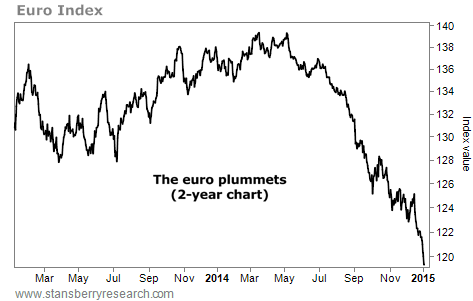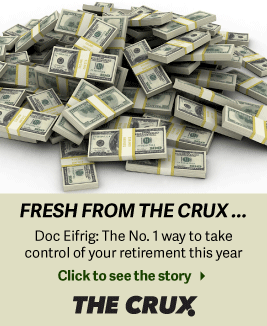| Home | About Us | Resources | Archive | Free Reports | Market Window |
One of the Best 'Hard Assets' to Own in 2015By
Wednesday, January 7, 2015
To most everyone's surprise, the U.S. dollar continues to surge...
The U.S. Dollar Index has gained nearly 15% in the last six months... an astounding move for a major currency.
While this is great news for the purchasing power of U.S. consumers, it has crushed the value of almost all "hard assets" such as oil and precious metals – which are priced in U.S. dollars.
However, one overlooked commodity has continued to provide my Income Intelligence subscribers with growth AND yield over the past few months... even with a surging dollar.
I'm talking about timber...
Timber is a great portfolio holding because it's a "soft hard asset."
By that, we mean it's a real and valuable commodity. A lot of value investors have an affinity for commodities you can touch... So-called "hard assets," like precious metals, oil and gas, farmland, and other commodities, are perceived as having an intrinsic value no matter what's going on in the business cycle.
Timber is similar. We're always going to use lumber for building, but we have a limited amount of land. However, timber grows...
It's not a strictly limited commodity like gold or oil. Once you "prove" a barrel of oil in the ground, all you have is one barrel of oil. It doesn't grow or multiply. Same with gold. But when you own timberland, it continues to regenerate its value. Compare that with a gold mine, which decreases in value as every ounce of ore is pulled from the ground.
That makes timber both a viable growth business and a hard asset.
As a business, timber has a great cost structure. It has low fixed costs relative to other hard assets.
Once an investor has bought timberland, the upkeep is cheap. If timber prices are low, like they were during the recession, you simply don't cut any wood.
By sitting and waiting for a better market, the reduced supply raises prices. Timber owners don't have a lot of costs they need to pay while they wait. Better still; the timberland grows more valuable as trees grow.
Compare that with a gold mine, which has a massive capital investment in machinery and employees that need to be kept up even if prices are low. It's expensive to shut down a gold mine.
Timberland grows on its own. It's cheap to run. It'll always have demand. The continuous harvesting carves out regular income. It's an ideal investment. That's why timberland values have handily trounced the stock market.
The chart below compares the value of a pool of individual timber properties measured by the National Council of Real Estate Investment Fiduciaries (NCREIF) Timberland Index with the S&P 500 stock index:
 And you can benefit not only from rising timberland values, but also from the yearly income. For example, timber stocks Rayonier, Plum Creek Timber, Potlatch, and Weyerhaeuser all own huge areas of timberland. And since they are structured as real estate investment trusts, they enjoy tax breaks that allow them to pay shareholders high yields. All of them pay dividend yields of more than 3%.
If you're looking to collect income while investing in "hard assets," consider investing in timber today.
Here's to our health, wealth, and a great retirement,
Dr. David Eifrig Jr.
Further Reading:
One of the reasons Doc likes timber right now is because the housing industry is finally starting to recover. A few months ago, Steve explained why the recovery shouldn't stop anytime soon. "Yes, house prices have gone up in recent years," he writes. "But based on the numbers, there's still plenty of room on the upside here." Get the full story right here.
In a classic interview, Steve explained why timber is one of his all-time favorite "alternative" assets. "There's a long list of reasons why investing in timberland is a great idea... and consistently produces big returns." Learn all the reasons here.
Market NotesTHE EURO IS PLUMMETING Today is another edition of "the value of bank accounts is more volatile than you think."
Currencies like the U.S. dollar, Europe's euro, and Japan's yen trade on big financial exchanges just like stocks and commodities do. Most folks don't realize just how volatile currencies can be... and how their global purchasing power is affected. Over the past few years, we've run many charts that show currencies can be extremely volatile.
A recent example of this is shown with a chart of the pan-European currency, the euro. The European economy is struggling, so its central bankers are intent on devaluing the currency in order to "do something" to help. This has caused panic in the market...
Since May, the euro has lost nearly 14% of its value. This is a stupendous move for a major currency in such a short time. It's also a sign that things are getting worse for the European economy.
 |
Recent Articles
|



